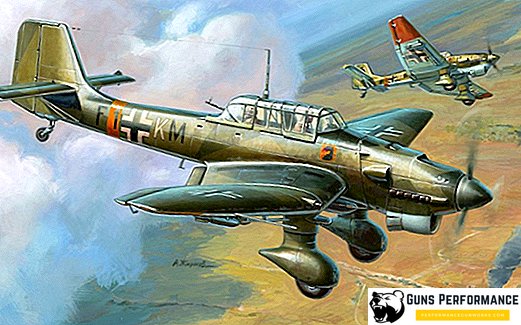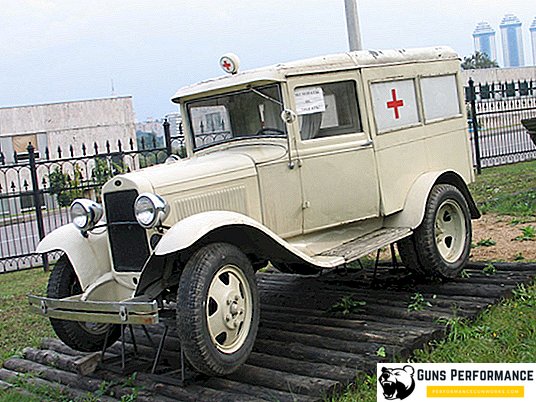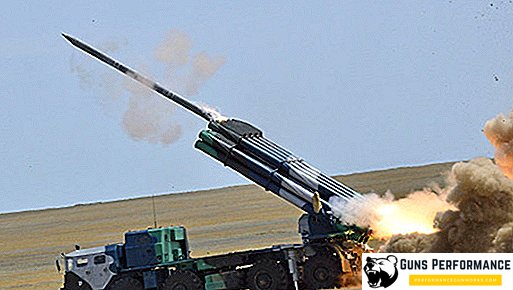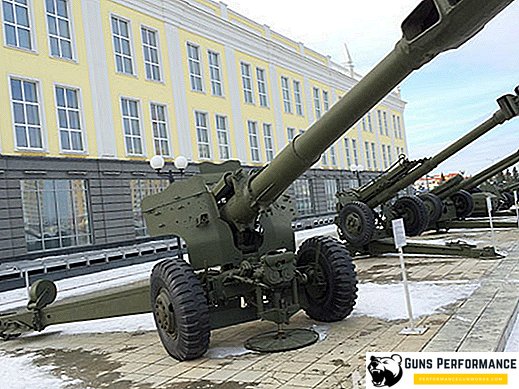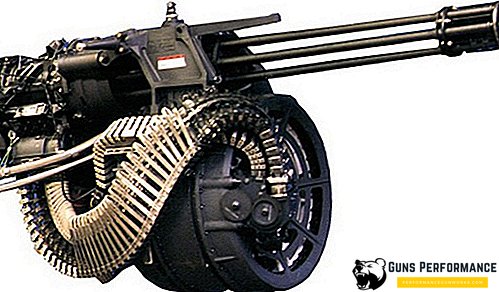A powerful rocket-bombing strike falls on the deserted shore. Sea sand boils dozens of explosions, dense shroud of smoke obscures the entire coastline. The sounds of an insane symphony mingled in a growing buzz, in which the roar of the engines of armored vehicles and amphibious ships is distinctly caught. A couple of minutes later, an armored troop-carrier, on board of which the landing of the amphibious assault forces, is rapidly jumping out onto the sandy beach. Something like this, in the view of a man in the street, looks like actions in a modern battle of one of the elite military units - the Marine Corps of the Russian Navy.
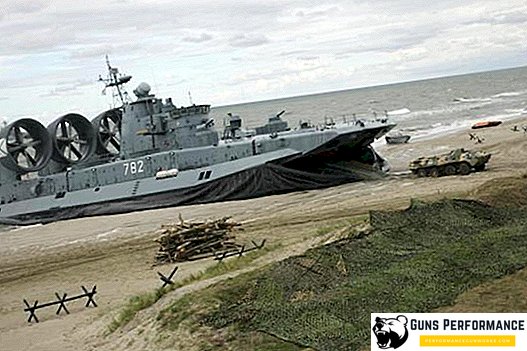
In reality, everything looks so far away. A beautiful and impressive picture of the landing of an amphibious assault force gives way to a military operation, in which the main aspects are secrecy and coherence. The landing operations of the fleet in modern conditions are designed more for the surprise factor. Often there is a need for a short period of covertly seizing a coastal object, disable the coastal infrastructure or occupy a certain territory. These and many other operational-tactical tasks are able to be accomplished by specially trained troops - naval special forces.
In the Russian fleet, these units are part of a separate kind of coastal troops, one of the most combat-ready and trained military units of the Armed Forces of the Russian Federation. Marines Day is considered one of the most glorious and significant military holidays in Russia. Today, not a single military operation can do without the participation of black berets, not a single military parade of the Russian Armed Forces takes place.

The military uniform of the naval infantry of the Russian Navy cannot be confused with anyone. The Marine Corps, as well as the uniform of the units, has a black color.
Marine history
Since antiquity, wars have often been fought in coastal areas. The main task of the opposing sides was the seizure of the coastal cities, through which the main trade was carried out and the land armies were supplied. The main instrument of the struggle in those days was the infantry - a branch of troops capable of acting both on land and at sea. Ancestor and prototype of the modern marines is considered the Roman army. It was in its composition that the first units of the naval special forces stationed on warships appeared.

This combat experience of the Romans took over the armies of other states. Over time, the infantry landing on the enemy shore became a key element of the military strategy. A striking example of successful amphibious assault at sea is the military companies of the Vikings, who kept all of Western Europe in a state of fear. Virtually the entire military history is full of examples of the successful use of such tactics of warfare. As part of the military fleets of leading maritime powers began to appear special units or boarding teams - a prototype of the marines, performing special tasks.
Today, almost any military fleet incorporates such military formations. The Marine Corps is the main striking force of the US Army, acting in American interests in various maritime theaters.
Russian fleet and marines - the road to glory
For Russia, the impetus for the creation of special infantry units within the structure of the navy, was the Northern War. In the appearance of the Russian marines, Peter I played a key role. Special infantry teams began to appear in the navy, performing the function of boarding and assault groups. Assessing the high effectiveness of such units in battles with the Swedes, the Russian Tsar in 1705 formed a regiment of naval soldiers as part of the Baltic Fleet. The date of the royal decree - November 27, 1705, became a point of reference in the history of a new kind of military and is celebrated in Russia as the Day of Marines.
A striking example of the successful actions of the first marine infantry teams was the Gangut sea battle, in which the Russian galley fleet aboard the Swedish squadron of Admiral Erensheld. Repeatedly, the Russian army, operating against the Swedish troops in Finland and on the islands of the Gulf of Finland, used the practice of amphibious assault forces, when the marine played the key role.

Since the time of Peter the Great, the Marine Corps units have become an effective tool not only at sea, but also in land campaigns. It is worth noting the successful actions of Russian sailors in the Mediterranean during the Russian-Turkish war of 1768-1774. - Russian marines demonstrated their courage and high efficiency. The regiment of marines, operating in the Baltic squadron of Admiral Spiridov, participated in the seizure of Turkish fortresses. Marines distinguished themselves under the command of Admiral Ushakov. The Russian naval crews and units of the Marine Corps acquired fame during the storming of the French fortress on Corfu Island.
The inhabitants of Naples, liberated from the French troops, were greeted with honors by Russian sailors. During the military parade in the front ranks of the column of Russian troops marines marched.
The Russian Marine Regiment took part in the legendary Battle of Borodino, the largest land confrontation of the beginning of the XIX century. An important milestone in the biography of Russian marines can rightly be considered the heroic defense of Sevastopol in 1854-1855. The city and the naval base of the Russian fleet for 11 months kept the defense against the allied army. The combined French-British army with the support of the Turkish troops for a long time could not take the sea stronghold. The Russian sailors, already in the capacity of infantry, not only successfully repulsed the attacks of a superior enemy, stormed enemy lines, trenches and batteries, carried out sabotage and subversive work.

From 1811, the marines were abolished. The functions of the land sea units were performed by the crews of military vessels belonging to the fleets of the Russian state.
The hero of the defense of Sevastopol, Vice-Admiral Nakhimov, the first of the Russian military commanders began to form from the former crews of the military vessels of the Black Sea Fleet a naval battalion for sabotage and special operations on the coast. In total, during the defense of Sevastopol, 22 full-fledged subunits were formed from naval sailors operating as part of infantry units on the land front.
At every stage of modern history for the marines was the work. Naval teams operating onshore as assault units took part in the battles of the Russo-Japanese War of 1904-1905. Only in the defense of Port Arthur from the Russian army in ground operations were involved up to 10 thousand sailors.

The marine infantry battalions created on the basis of the naval crew appeared in Russia with the beginning of the First World War. To determine the place of the new military unit in the structure of the army and navy should be "Regulations on the Marine Corps." A statute of this kind of troops, military uniform, insignia and a flag were drafted, but the February revolution and subsequent events at the front and in the country temporarily prevented the development of this kind of troops.
Marines at the present stage
The last active participation of the pre-revolutionary formations of naval sailors in combat operations on land falls on the period of the Civil War. For four years, the sailors of the Baltic and Black Sea fleets, as well as river military fleets, operated as part of the land units of the Red Army. The sailors' detachments acted on the most dangerous sectors of the front, in all the theaters of the Civil War. The first combat unit with the functions of the Marine Corps as part of the Red Army was the 1st Azov Expeditionary Marine Division, which included a marine regiment, an aviation detachment and a company of armored vehicles. The division covered the flanks of the Frunze army in the Kuban during the defeat of Wrangel.
After the end of hostilities, the country was in a difficult economic condition. The navy as a full-fledged combat structure ceased to exist. Accordingly, the Marine Corps was forgotten. Its revival as a separate branch of the army was in 1939. The first naval unit, a brigade that performs the functions of marines, was created in the Baltic. Only the beginning of the Great Patriotic War marked the beginning of the restoration of the marines as a separate branch of the army, which is part of the structure of the Soviet Navy. The marine brigade became the main structural element of the navy ground units.

During the war years, 40 separate brigades of marines and 6 separate marines were created, the total number of which reached 350 thousand people in certain periods. Marines especially distinguished during the defense of Sevastopol. The 8th separate marine brigade of the Black Sea Fleet effectively operated here. Soviet naval infantry participated in the Battle of Stalingrad, in the liberation of Tallinn, Odessa and the storming of Berlin. Pacific Fleet sailors along with a battalion of marines took part in the liberation of Sakhalin Island, in military operations against the Japanese forces in the Far East in August 1945. Black caps and uniforms terrified the enemy. The German soldiers knew well what the attack of the Soviet land sailors was. For the bravery of the Soviet marines on the battlefield, the Germans have the complimentary and terrible nickname “Black Death”. For their heroism in numerous military operations, a number of naval brigades received the title of guards.
World War II became the pinnacle of the martial power of the marines. The numerous naval landings of the Allies in the Pacific and Western Europe, the actions of the Soviet "black berets" on the Soviet-German front are the clearest example of this. The US Marine Corps, which bore the brunt of the fighting with the Japanese, clearly showed how effective the actions of land seafarers can be in modern combat conditions. The US Marines was the most equipped and trained branch of the military, which could effectively solve large-scale operational-tactical tasks. There are legends about the feat of the American KMP fighters during the capture of the island of Iwo Jima. Everyone knows the sculptural composition depicting a group of marines erecting a US flag on the top of a captured island.

Despite their high combat effectiveness, the use of parts of the marines after the end of the Second World War in the Soviet Union was limited. In 1956, it was decided to disband the units of the Soviet marines.
New time
The experience of combat operations in the post-war period, when most of the ground operations were performed by amphibious landings, proved the fallacy of the decision made. The US Marine Corps has become one of the most effective tools of aggressive American foreign policy in different regions of the globe. As a result, the Soviet top leadership ordered the re-establishment of the Marine Corps units in the military fleets. During the 60s, transformations were under way in the Soviet Navy, as a result of which the kind of coastal troops, the marine infantry, reappeared.
In the Belorussian Military District in 1963, the first full-fledged combat unit was created - 336 separate marine regiment based on the Baltiysk naval base. In the future, the top management of the Navy decided to form one naval brigade on each of the fleets. On the Caspian Sea, on the Danube and on the Azov Sea, smaller marine units were created. Combat units of the Marine Corps were equipped with the most modern weapons. The marine brigade consisted of various units, from rifle units to tank companies and artillery batteries. The fleets began to receive equipment of amphibious vessels of various classes capable of delivering a marines platoon to the enemy rear or to ensure a landing of a likely enemy of a large military unit with heavy armament on the coast.
In the modern Russian Navy, marine units are assigned a decisive role in solving operational-tactical tasks. The regiment, which until recently was the main structural subdivision of this branch of the military, is now a separate brigade of marines equipped with the most effective weapons. Such large combat units are created in all fleets: the Northern, Pacific, Baltic and Black Sea. Modern marines are assigned the functions of countering the sabotage and espionage activities of the potential adversary's naval forces in places where the fleet is stationed. Not a single military tactical or strategic military exercise can do without units of the marines. Marine Day once again became one of the major military-patriotic holidays.

Distinctive features of this kind of troops are not only its high technical equipment, the specificity of combat missions and functions, but also the insignia. The flag of the Marine Corps is a St. Andrew’s blue cross on a white background. In the center of the flag there is an emblem of marines, a golden anchor on a black circle.
The combat significance of the brigades of marines today is difficult to overestimate. These units are among the most combat-ready in the Russian army and navy.



